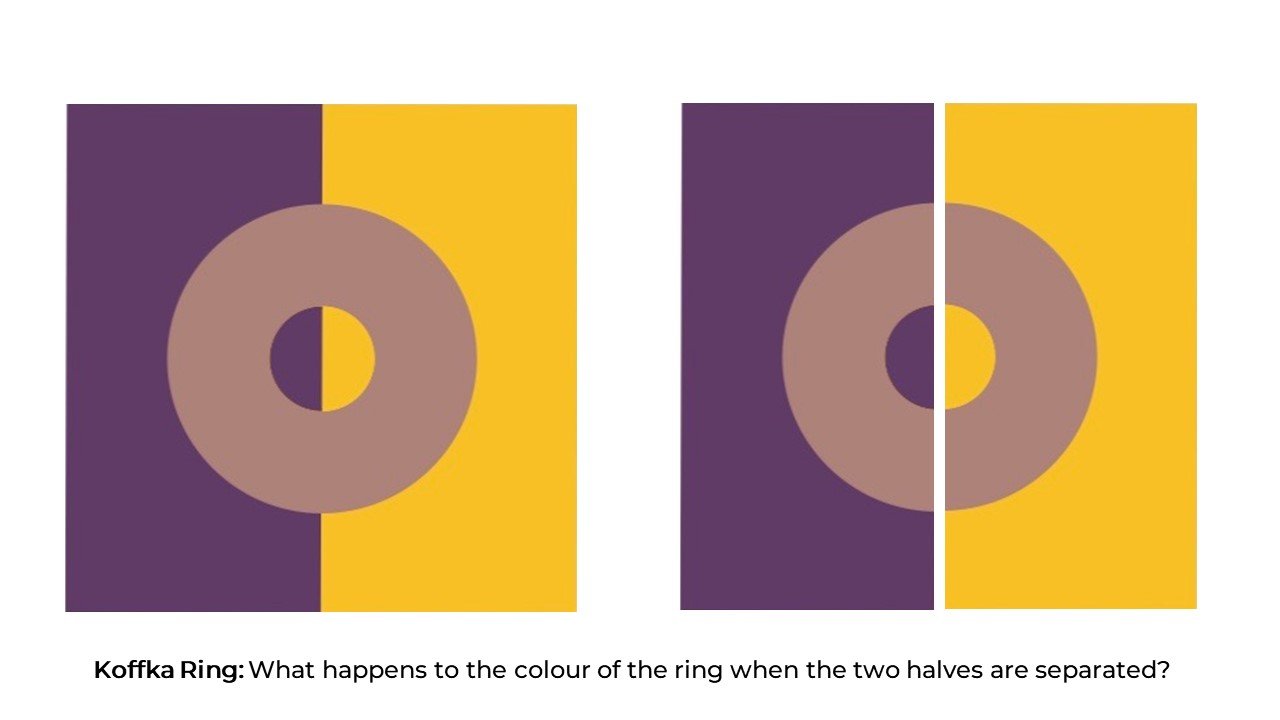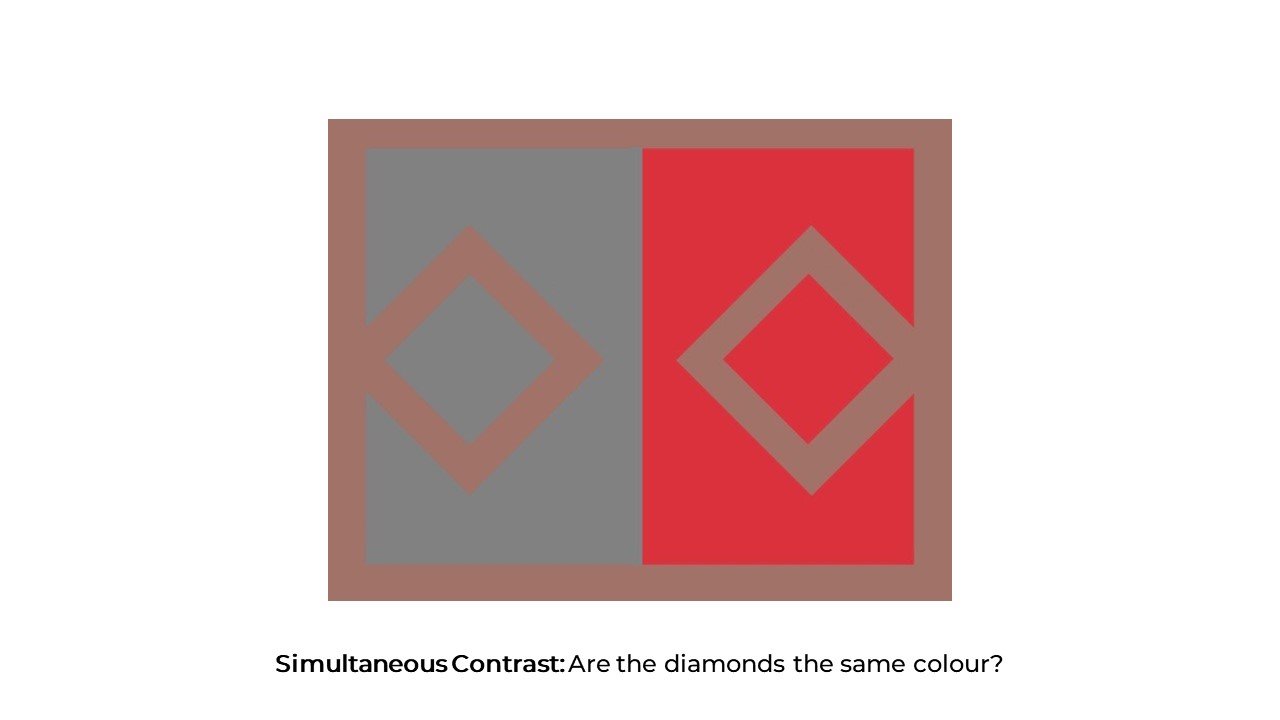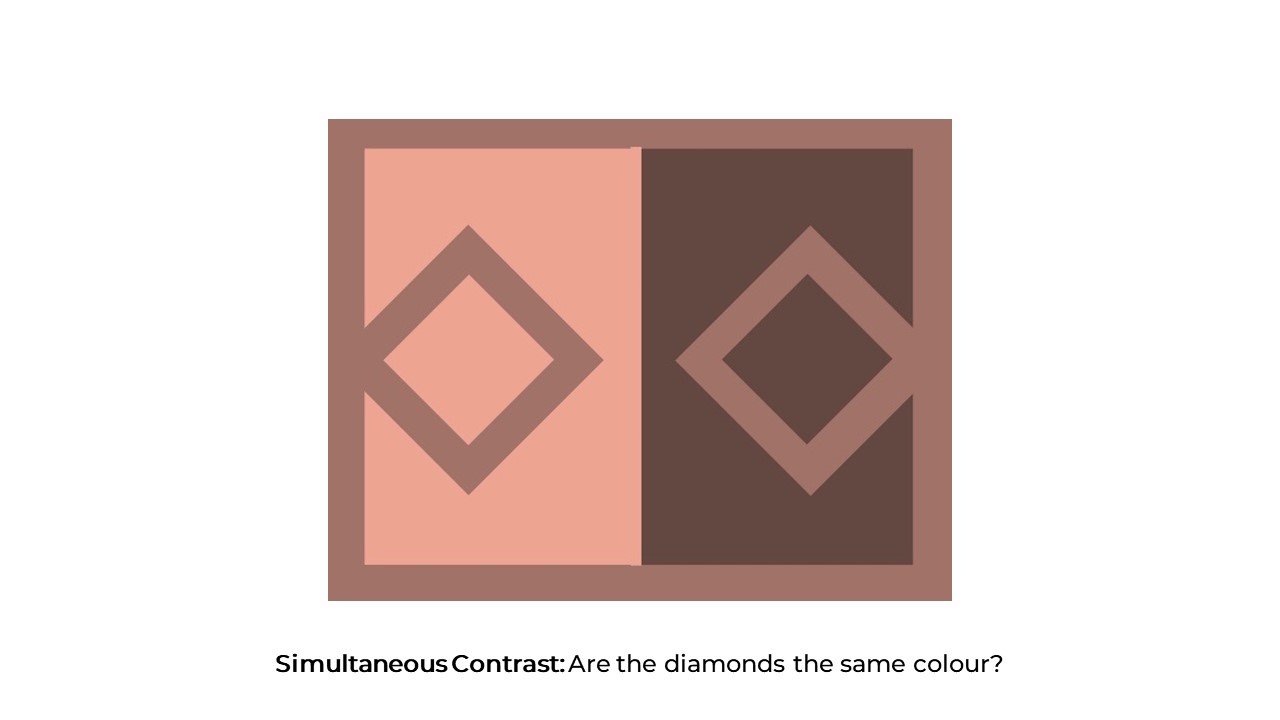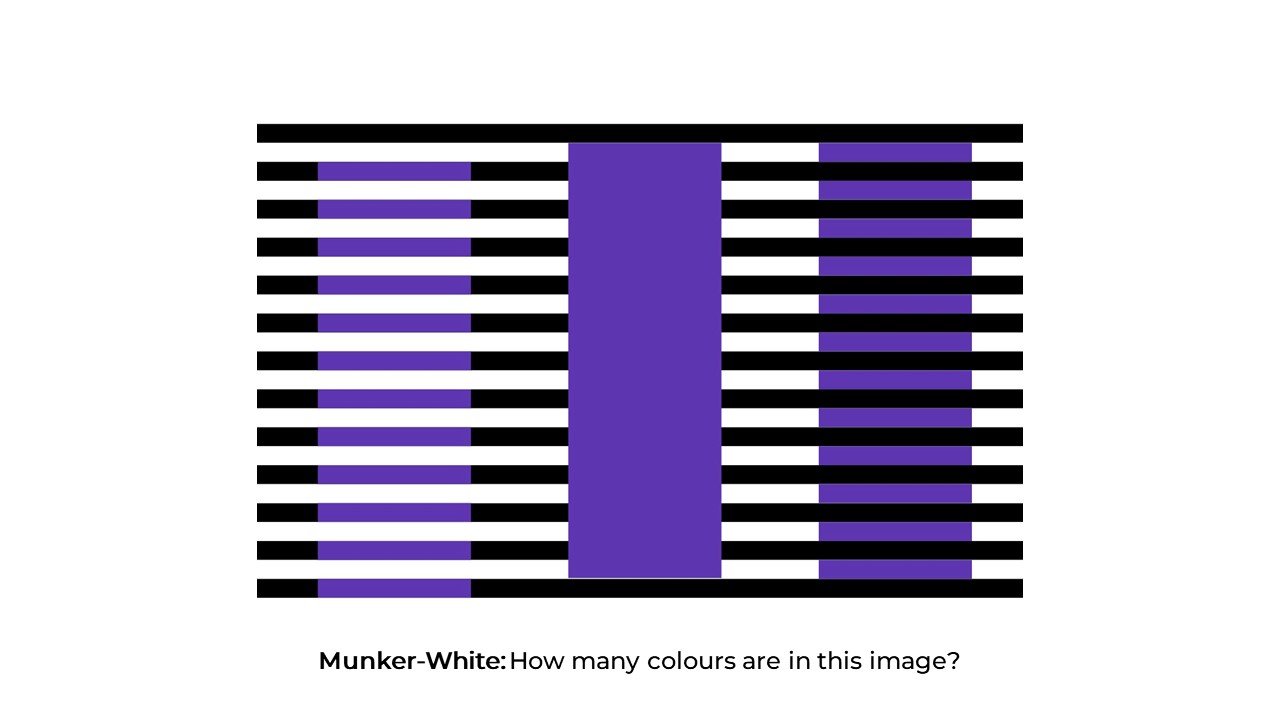Colour is contextual
Have you ever bought an item of clothing at a store, and found that it looks different when you get home? Maybe you bought a pale blue T-shirt, and found that instead it looked like a muted lilac colour when you tried it on at home. (And maybe you really don’t like lilac.) In this case, the lighting used at the store is different from what you use at home. The light source is one example of something that impacts the colour we perceive.
Many other factors also influence the colours we perceive. Factors in the immediate environment like the surrounding colours, lighting conditions and distances to objects all play a role, combined with other less tangible factors like our experiences, memories, cultures and languages.
Image courtesy of Paul Green-Armytage.
Another example which demonstrates how the local environment impacts a colour is if we build a 3-dimensional cube from a single coloured paper - like orange. If we look at the different sides of the cube - we will see it has different colours, because the amount of light falling on each part of the cube is not the same. A template for you to build your own orange cube is available below.
Image courtesy of Harald Arnkil.
If we pay closer attention to the colours around us, we can start to notice how they depend on context. To the left is a scene which is typical of our daily environment. Notice how the lighting varies in the scene. In the image there are many white objects which we recognize as white, although they reflect very different amounts of light to our eyes. (And yes - white, like black, is a colour.) Have a look around your immediate surroundings - do you notice how colours can change depending on their context?
Colour Illusions
Many visual illusions make use of the fact that the attributes of the surrounding colours impact the colours we perceive. Several illusions are shown below. Also see the template for the Munker-While illusion below, for you to create your own version.






Images courtesy of Paul Green-Armytage and Robin Kingsburgh
In addition to the various external contexts which impact the colours we see, there are several internal contexts which also can play a role in how we perceive colour. Our memories, experiences, culture and language all contribute to the overall context for colour perception.
Try this!
Koffka ring
An immediate and intriguing example of how context affects perceived colours.
Orange Cube
Build an orange cube (or use a uniform-coloured object) and notice how light affects the colours we see!
Munker-White illusion
Do the colours match on both sides of this image? Explore why context is everything for colour!
Changing spatial contexts
Notice how changing the spatial context affects a perceived colour










